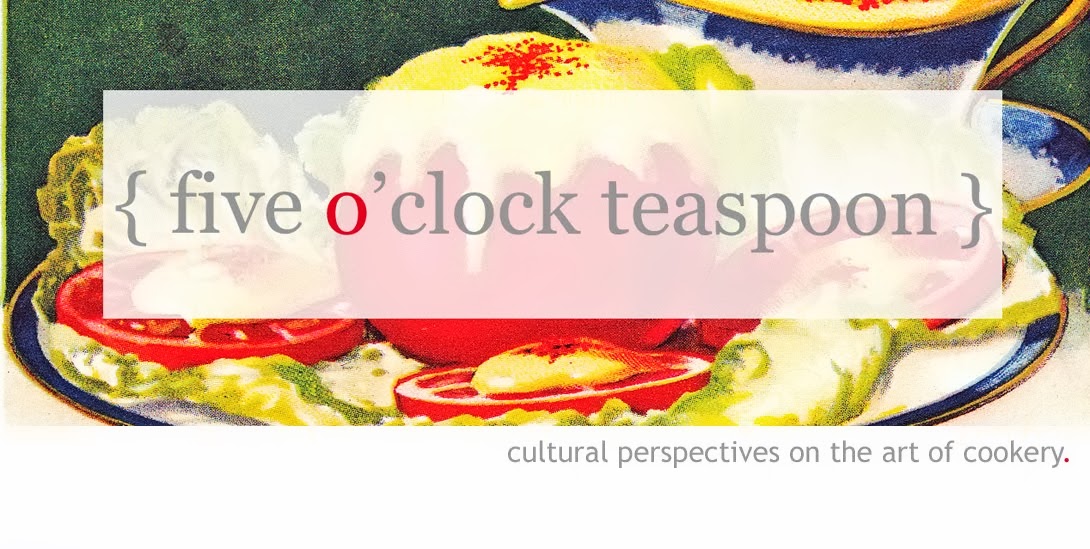
The Story of Carnation Milk, Booklet, 1915. Things Made with Carnation Milk .
Carnation Milk Bread, from "The Story of Carnation Milk"
Makes 3 small loaves and a dozen small rolls
1 cup Carnation Milk
2 Tbs shortening
1 Tbs sugar
2 tsp salt
3 cups boiling water
1 yeast cake
1/2 cup lukewarm water
11 to 12 cups (even) flour
Measure Carnation Milk, shortening, sugar, and salt into bowl; pour on the boiling water; stand until lukewarm.
Add the yeast which has been dissolved in the lukewarm water; stir in as much flour as dough will take up, and turn upon bread board.
Knead 15 to 25 minutes, adding additional flour as needed. Put in mixing bowl and cover; set to rise; when risen to double original size, turn on floured board, cut into loaves, kneading only to give shape. Let rise in pans to double size and bake.

5 o'clock teaspoon Adapted Milk Bread
Makes 1 standard loaf
1 cup evaporated milk, plus more for brushing
1 tsp yeast
2 tsp sugar
1 Tbs butter
1/2 tsp salt
2 1/2 to 3 cups all purpose flour
Grease a standard-size metal loaf pan and line with parchment, leaving a 1"-2" border. Pour 1/4 cup warm (almost hot) water in a large, non-reactive bowl and sprinkle yeast over surface of the water. Give it a little swirl so that the yeast dissolves. Gently heat evaporated milk and butter in a saucepan until lukewarm and the butter has dissolved. Pour into bowl, and stir in sugar, salt and 2 cups of flour. Continue to add flour about 1/2 cup at a time until the dough will not take more. Turn on a floured surface and knead 5-7 minutes, adding flour as necessary, until the dough is smooth, soft, and no longer sticky. Place in a large bowl covered by a damp cloth and set in a warm spot until doubled in size, about 1 1/2 hours.
Once dough has risen, gently form into a loaf shape, place in greased loaf tin, cover, and set to rise, about 1 hour. Preheat oven to 375°F. Once loaf has more or less doubled, brush with a little evaporated milk or butter and place in center of oven. Bake for about 30 minutes, or until top is golden brown.
*To be sure the bread is done, lift from pan by pulling on the parchment border. Insert a bamboo grilling skewer through the middle at an inconspicuous spot. If it comes out clean, the loaf is ready.

A reader submitted the following wonderful adaptation of the recipe for use with bread machines:
Carnation Milk Bread Adapted For Bread Machines
Prep Time: 15 | Cook Time: 3 hours | Servings: 1 1-1/2 pound loaf | Difficulty: Easy
Ingredients:
3/8 cup warm water
2 1/4 tsp yeast (1 package)
1 1/2 cup evaporated milk (1 can)
1 1/2 Tbs butter
3 tsp sugar
3/4 tsp salt
3 3/4 cups all purpose flour
Directions:
Sprinkle yeast on top of warm water and then swirl
Heat milk to 100° (30 seconds in microwave, then stir)
Stir in sugar, salt, yeast mixture
Pour into bread machine
Measure flour into bread machine
Set machine to light crust setting if it has one
Notes: Warm means 98°–105°
See also, Selling Milk Between the Wars" Two Pre-WWII U.S. Milk Industry Booklets, Part 1

A reader submitted the following wonderful adaptation of the recipe for use with bread machines:
Carnation Milk Bread Adapted For Bread Machines
Prep Time: 15 | Cook Time: 3 hours | Servings: 1 1-1/2 pound loaf | Difficulty: Easy
Ingredients:
3/8 cup warm water
2 1/4 tsp yeast (1 package)
1 1/2 cup evaporated milk (1 can)
1 1/2 Tbs butter
3 tsp sugar
3/4 tsp salt
3 3/4 cups all purpose flour
Directions:
Sprinkle yeast on top of warm water and then swirl
Heat milk to 100° (30 seconds in microwave, then stir)
Stir in sugar, salt, yeast mixture
Pour into bread machine
Measure flour into bread machine
Set machine to light crust setting if it has one
Notes: Warm means 98°–105°
See also, Selling Milk Between the Wars" Two Pre-WWII U.S. Milk Industry Booklets, Part 1



